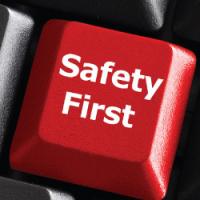- Posts: 350
- Thank you received: 11
Tree Trimming and Felling Safety
- Safety Toolbox Talk Webmaster
-
 Topic Author
Topic Author - Offline
- Administrator
-

Every year professional and recreational tree trimmers get hurt or killed in the process of taking down a tree. Logging operations are one of the most dangerous jobs in the country and with good reason.
This recent article from Fox4KC in Kansas City, MO is a recent example that appears to turn out just as an incident rather than a fatality.
Co-worker Rescues Tree Trimmer After Tree Limb Falls, Knocks Man Unconscious While in Tree
Fox4kc.com - BY MICHELLE PEKARSKY AND KERRI STOWELL, - MAY 3, 2016
KANSAS CITY, Mo. -- A local tree trimmer is recovering after an accident left him unconscious and dangling nearly 30 feet in the air. Thankfully, the crew had trained for this exact scenario just last week.
Firefighters were called out Tuesday morning to 6708 North Bell, where tree trimmer Cory Fryman was knocked unconscious when a branch fell and struck him in the head. Fryman was climbing an old ash tree in the backyard of the house when the branch hit him, knocking him out. Luckily, he was wearing his helmet and all of his safety gear. Police say that, along with his crew's quick response, possibly saved his life.
The company, Urban Tree Specialists, had trained its employees for this exact scenario last week. The crew jumped into action, lowered Cory to the ground and got him stable until paramedics could rush him to a hospital.
Tree felling and trimming can present a number risks including: electrical hazards, falls, being struck by branches and trunks, and causing damage to nearby trees or structures. Farmers and gardeners must be aware of the potential hazards and take the necessary precautions to complete this work safely or know when to hire a professional.
Overhead Power Lines
While trimming tree limbs, always be aware of electrical power lines. Always assume a power line is energized unless confirmed otherwise. Most high voltage power lines are not insulated. Serious injury and possible electrocution can occur when contact with power lines is made. Indirect contact with non-insulated high voltage power lines can also lead to shock and electrocution. It is possible for the current from these lines to “jump” between the power line and the person or equipment, even if contact is not made.
Only experienced workers should trim trees near power lines. Check with the utility company before completing this work to discuss de-energizing, grounding or shielding the power lines. Utility companies will often complete this work free of charge or for a small fee. The cost is minimal compared to damaging the line or causing injury or death. Follow these procedures to decrease the risk of injury:
- Perform a hazard assessment of work area around tree.
- Always check for overhead power lines before felling trees or trimming limbs and branches.
- Check with power company.
- Stay at least 10 feet away from power lines.
- Never use a metal ladder to trim tree limbs near power lines.
Felling and Pruning
Properly felling a tree involves cutting the tree in such a way that it falls in a desired direction and eliminates or minimizes damage to adjacent trees and structures. To fell a tree safely, the immediate and surrounding area around the tree must be considered.
- Perform a hazard assessment of work area to determine felling direction and potential impact on surrounding area. Note if the tree is leaning in any direction as this will affect the direction it falls.
- Be aware of weather conditions, especially wind.
- Be aware of broken or hanging branches and if the tree is leaning against other trees, as branches may fall and leaning trees may spring back and cause injury.
- Branches and tops of dead trees may break off during felling.
- Know where others are located. Non-essential bystanders should remain well out of the felling area.
- Provide a safe retreat path for the logger to escape while the tree is falling.
- Use rope lines to help guide the tree in the desired direction.
- Make sure the tree has completely fallen and is not hung up on adjacent trees or held off the ground by limbs.
- Eye, face, hand, head, foot and leg protection is recommended.
Pruning involves removing dead, damaged or undesirable branches and limbs. Hazards are similar to felling and may include the additional risk of being struck by falling objects.
- If possible, have someone on the ground to act as a spotter.
- Always make sure that other workers and bystanders are not below before trimming.
- Whenever possible, trimming should be performed from the ground. If climbing the tree is necessary a professional arborist should be used.
- Never utilize a suspect limb or branch to support you body.
- Always utilize fall protection if you cannot prune the tree from ground-level.
Please Log in or Create an account to join the conversation.
